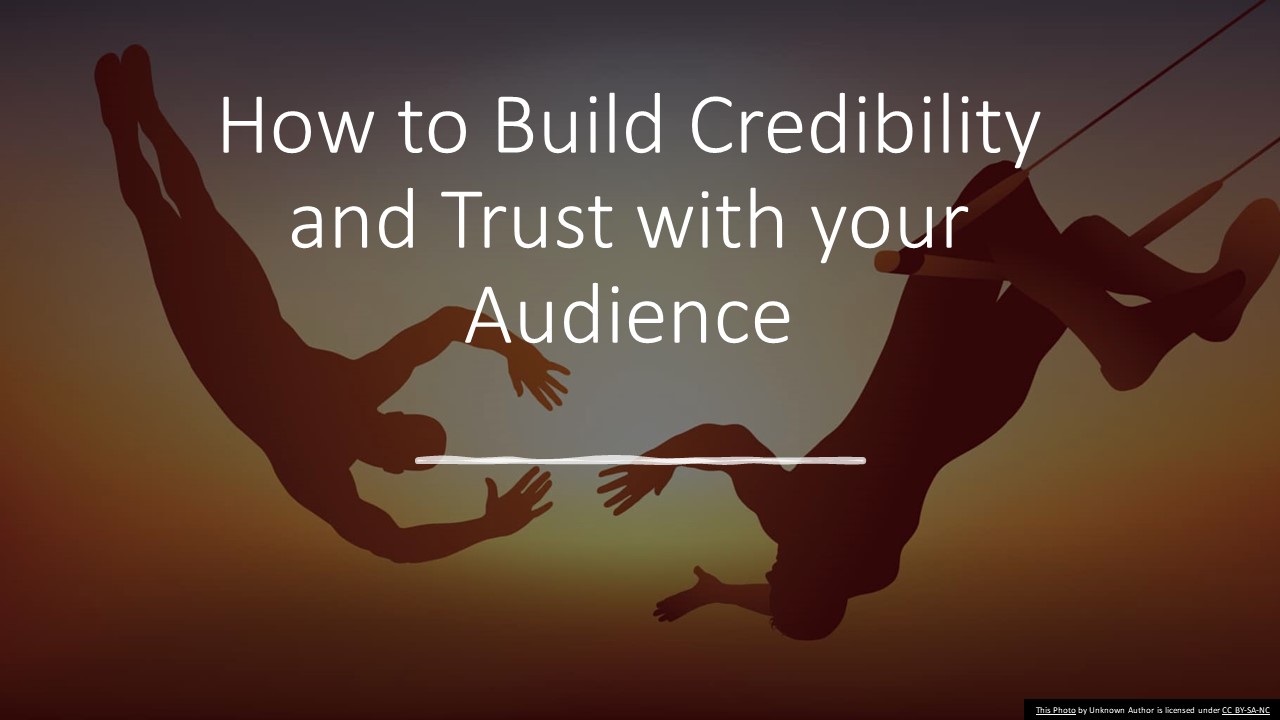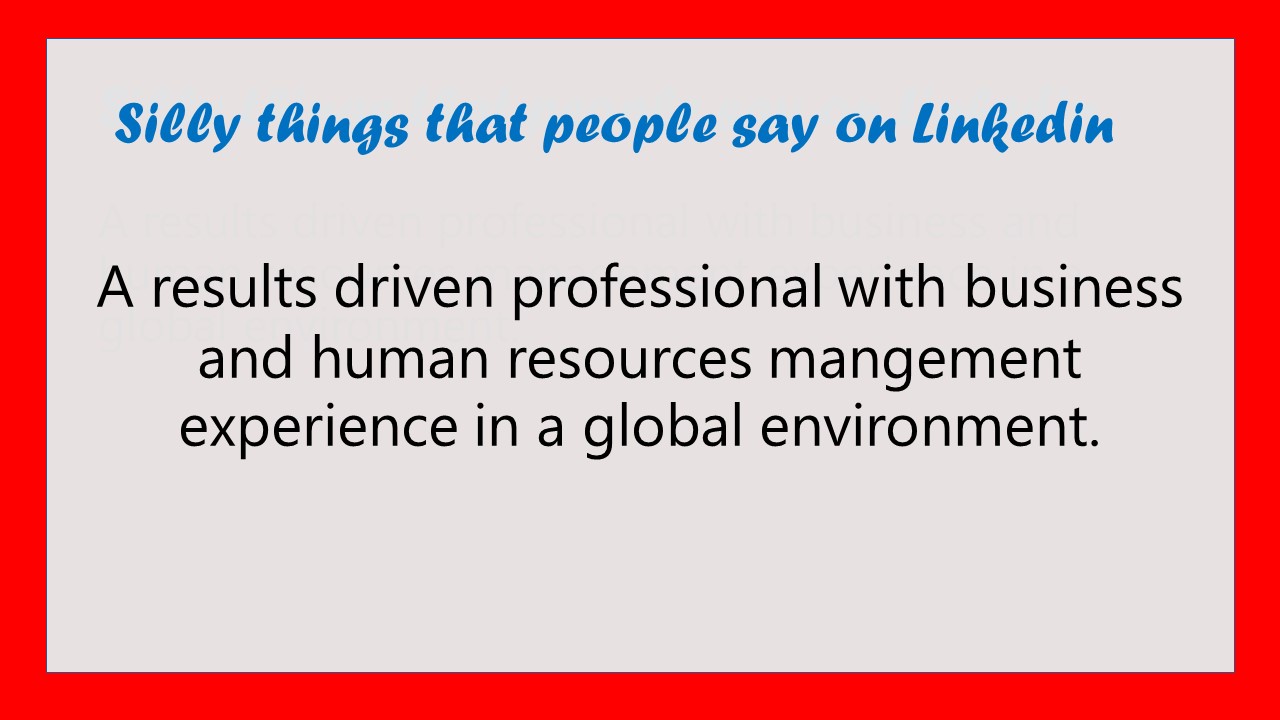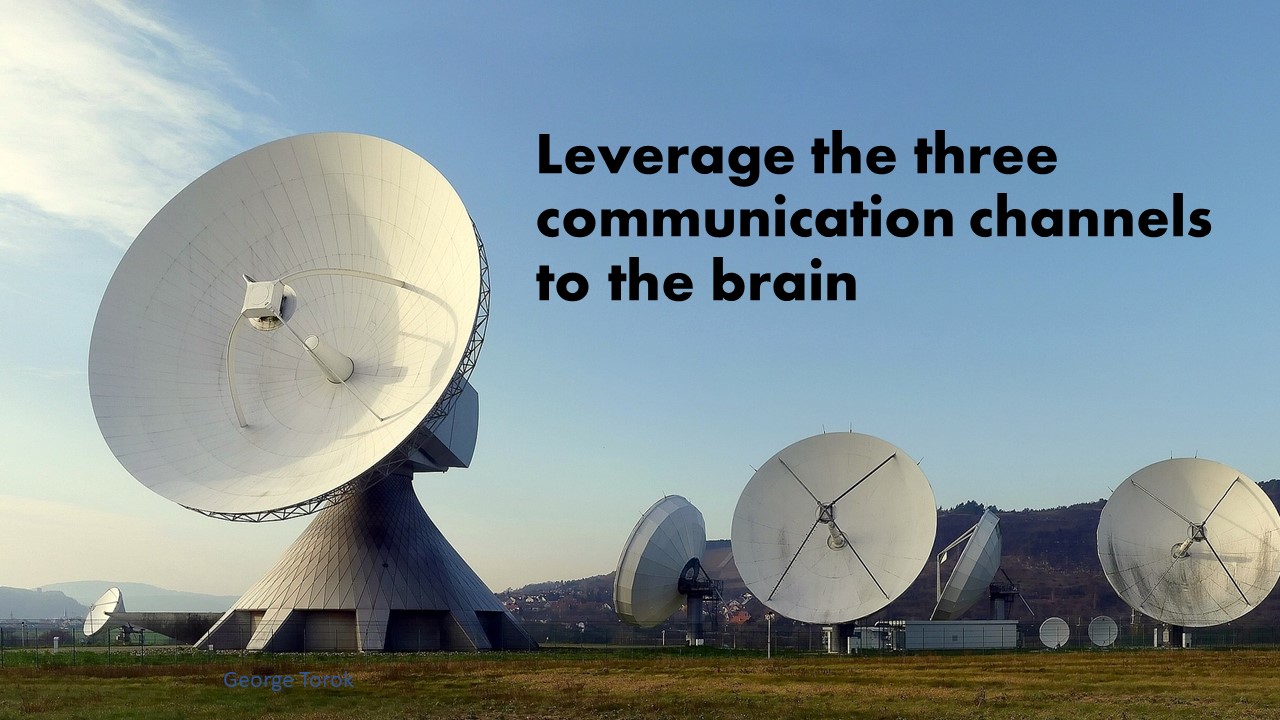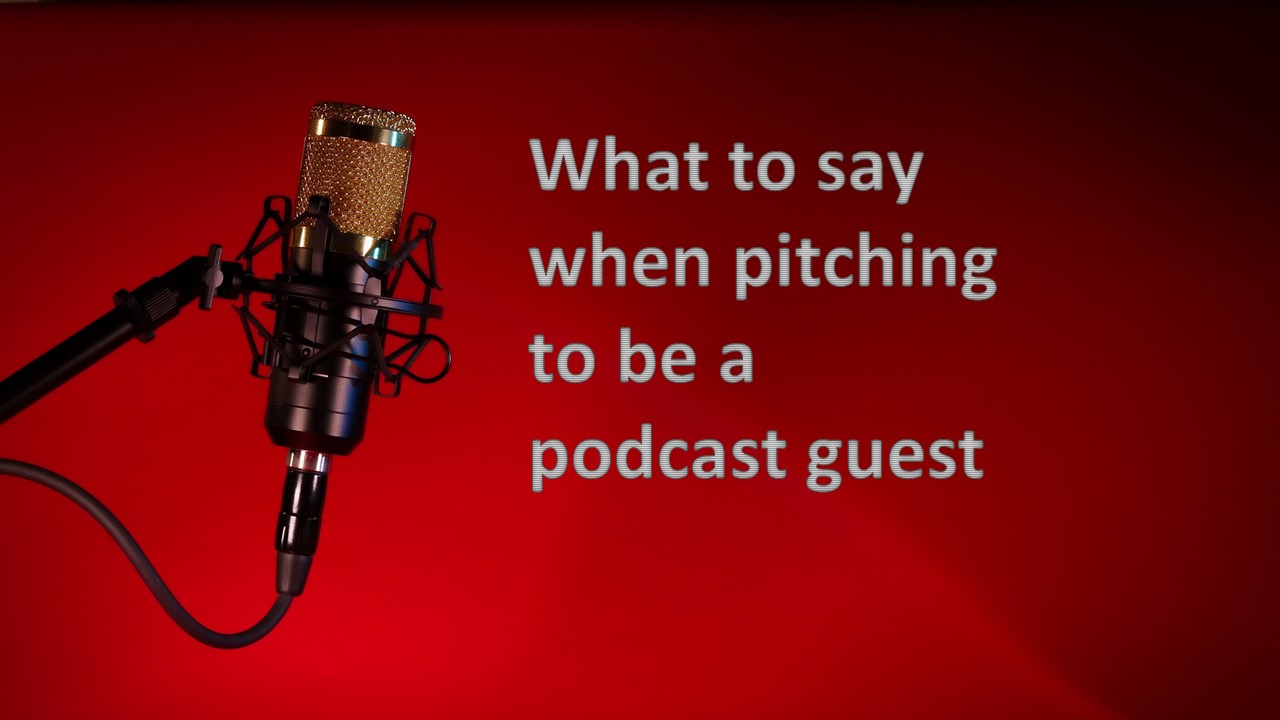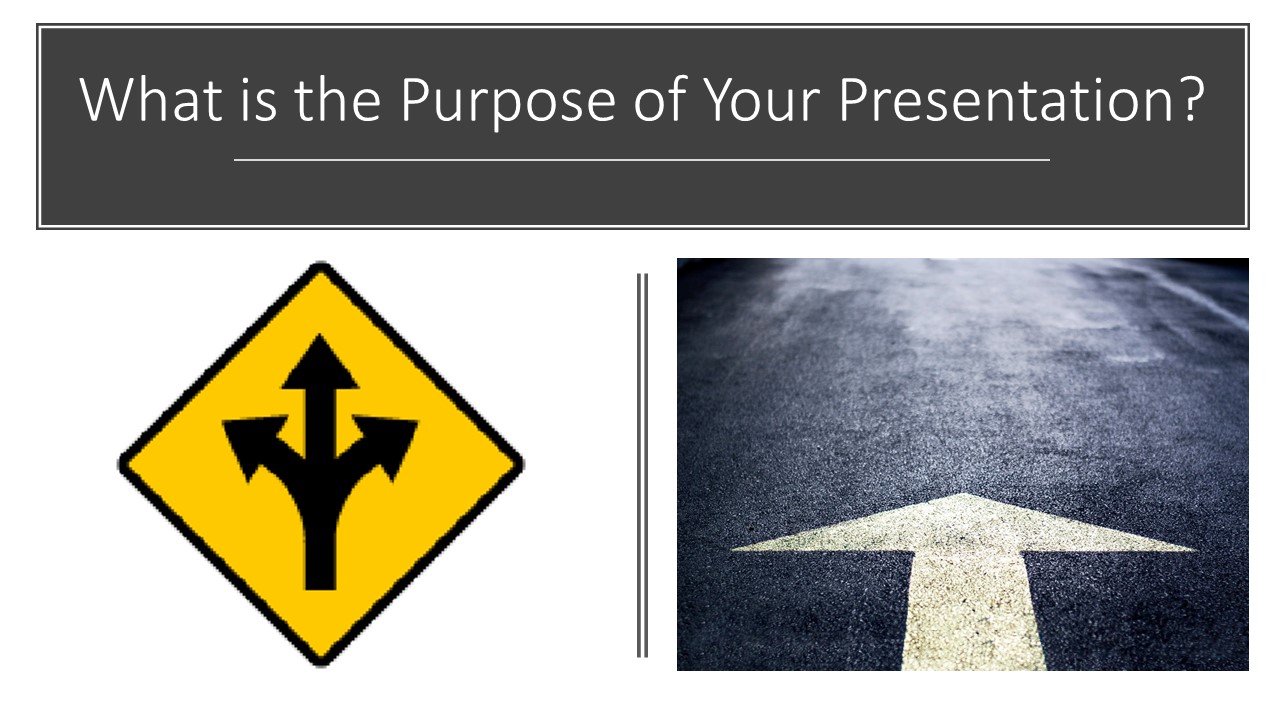Instead, he parked himself behind the lectern and boringly read the speech that someone wrote for him. Cleary the speech writer wanted to demonstrate his vocabulary by including several ten-dollar words. That doesn’t enhance comprehension, rapport or trust.
Establish Your Credibility and Build Trust
To persuade your audience to act on your message they must believe you. To be believable you must be both credible and earn their trust. If you don’t have credibility, no one will listen. If you have credibility but your audience does not trust you, they will not believe you.
Are you a Results Driven Professional? Really?
A results driven professional with business and human resources mangement experience in a global environment. What mistakes do you see with this opening statement on their profile?
You might notice that it’s full of vague terms. There’s nothing specific. What has this person accomplished? Nothing that we can see. It feels cliché and nothing grabs your attention.
It appears that they have written their profile to attract “click bait”. Key words that they believe recruiters might be looking for.
Nothing specific, nothing about their accomplishments. Simple click bait or so they hope.
How to Build Rapport and Connect with Your Audience
Do you want your message to resonate with your audience? The message is more likely to land well, be received and trusted if you have connected with your audience. They must know, like and trust you. How can you accomplish that? By building rapport rapidly near the beginning of your presentation.
Tell Me About Yourself
This was a question that was often asked in job interviews. I used to think that it was a lazy question from the interviewer. No imagination in posing that question. It was non- specific and vague. Then I realized that it might be a brilliant question because of the vagueness. The vagueness of the question would probably disrupt the comfort of the candidate. Let’s see how they handle this challenge.
What are the Three Communication Channels you Must Use?
The three main communication channels are processed by distinct areas within the brain. By using these channels correctly you leverage the different strengths of each channel. These channels are: Words, Voice and Visual.
How to Introduce your Guest Speaker – live or virtual
Introduce Your Guest Speaker with Bravado
When you are asked to introduce a guest speaker, grab the opportunity because it’s a chance to practice your speaking skills and connect with the speaker.
An introduction is a mini speech. Remember you are not the star so don’t try to steal the stage from the guest speaker. The audience didn’t show up to listen to your introduction so don’t try to be the entertainment. The speaker will appreciate a warm and inviting introduction.


